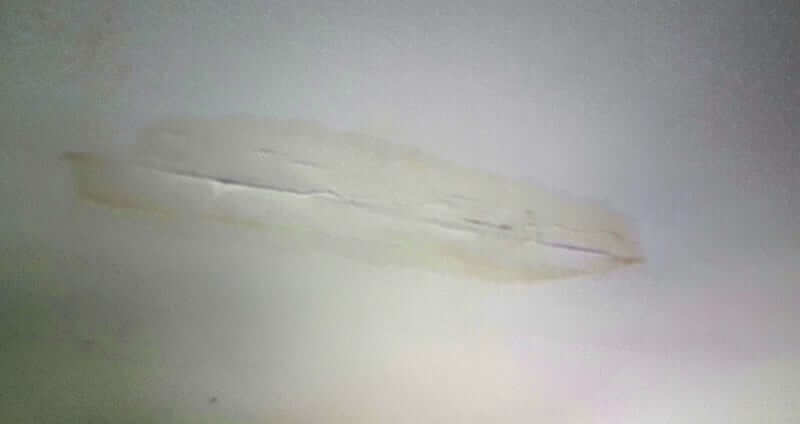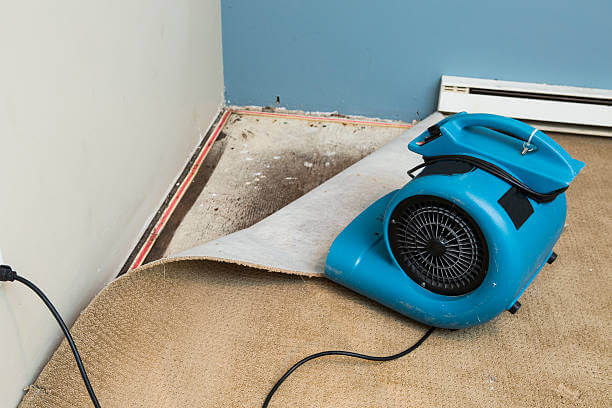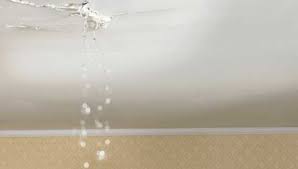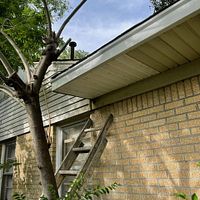It’s Night-Time, It’s Raining, and My Roof Is Leaking. What Do I Do?
Last night was the first rain since August. The storms just kept rolling through the night till morning which led me to the question, what do I do if I experience leaking from my roof in the middle of the night during a storm?
There are many maintenance steps to take to be proactive and prevent leaking from your roof; I will be posting those later this week. But here are some steps to follow if you experience leaking in the middle of the night or during a storm and your local roofing company cannot get to you right away.

Stop the Water From Damaging Other Thing
When you notice an active leak in your home, you should first minimize the water damage as much as possible. This means moving furniture out of the way from the leak or putting plastic (tarps, trash bags, even maybe a shower curtain) over the furniture, electronics, or other valuables
Contain the Water that is Dripping

Put a bucket or other water barrier items (trash cans) to catch the water that is dripping from the ceiling. If water splashes onto the floor, put an old T-shirt in the bottom of the bucket to absorb the splash, or try pinning a long string to the ceiling near the leak, so the water will have a path into the bucket. If the paint is bubbling, it’s likely holding water, so puncture the bubble to release the water into your bucket. If you cannot contain or control the water from coming in, it is time to call a licensed roofing contractor; many offer 24-hour emergency services.
Remove and Dry Up the Water

Once you have the leak under control, you need to thoroughly dry all carpet, furniture, woodwork, and anything else that was exposed to water. Not only will water leave a stain, but mostly, you must prevent mold from growing in your home. If your carpet is soaked, pull it away from the padding and expose both sides of the rug and the pad to briskly circulating air. If the damage is extensive, call a professional water extraction company.
Call Your Insurance Company or Local Agent
If you have experienced heavy damage, call your insurance agent to report what has been damaged. Although your policy may not cover damage from a leaky roof, contact your insurance agent as soon as possible and let them determine what is and isn’t covered.
Here are a few tips to help you choose the right contractor:
- Get 3-4 quotes from different companies
- Make certain your contractor is licensed, bonded, and insured as well as will pull all required permits if necessary
- Be sure your contractor agrees to locate and repair all wood damage before re-roofing your home
- Ask your contractor to outline specific maintenance instructions for your new roof
- Ask about the guarantee and the expected life of the roof
Do not allow any work to begin unless you are comfortable and each of these important requirements has been met. Also, be aware of temporary companies that come in and try to take advantage of you after a natural disaster

The Dangers of Waiting
You should respond to a roof leak quickly because they never fix themselves or get better on their own. Even if it doesn’t seem like it is all that bad, get it fixed now because with leaks something small can turn into something big real quick and cost you more money. Oftentimes, homeowners will notice the water stain on the ceiling or some bubbling and continue to put it off until the next time it rains, and they are reminded again because it has spread and gotten worse.
National Roofing Contractors Association recommends inspecting your roof twice a year, in the fall and spring. Here is what to look for to prevent a fixable issue from turning into a damaging and costly repair:
On the inside, you should look for:
- Dark spots
- Spots where outside light shines through
- Sagging
On the outside, you should keep an eye out for:
- Missing, warped, rotting, peeling, broken, blistering, or buckling shingles
- Clogged or slow-draining gutters/downspouts
- Loose material or wear around chimneys or vents
If your roof is less than 15 years old, it can probably be spot-repaired instead of requiring a total replacement. Remember a small leak will not go away—it will only get worse.
Roof leaks are typically just signs of a much larger problem. Both danger and the probability of structural erosion increase if unaddressed. Regular inspections are your best defense against a leaky roof. Be vigilant, search for leaks, and talk with your contractor about the condition of your roof regularly.
Stay tuned for maintenance tips on how to prevent leaks later this week.

